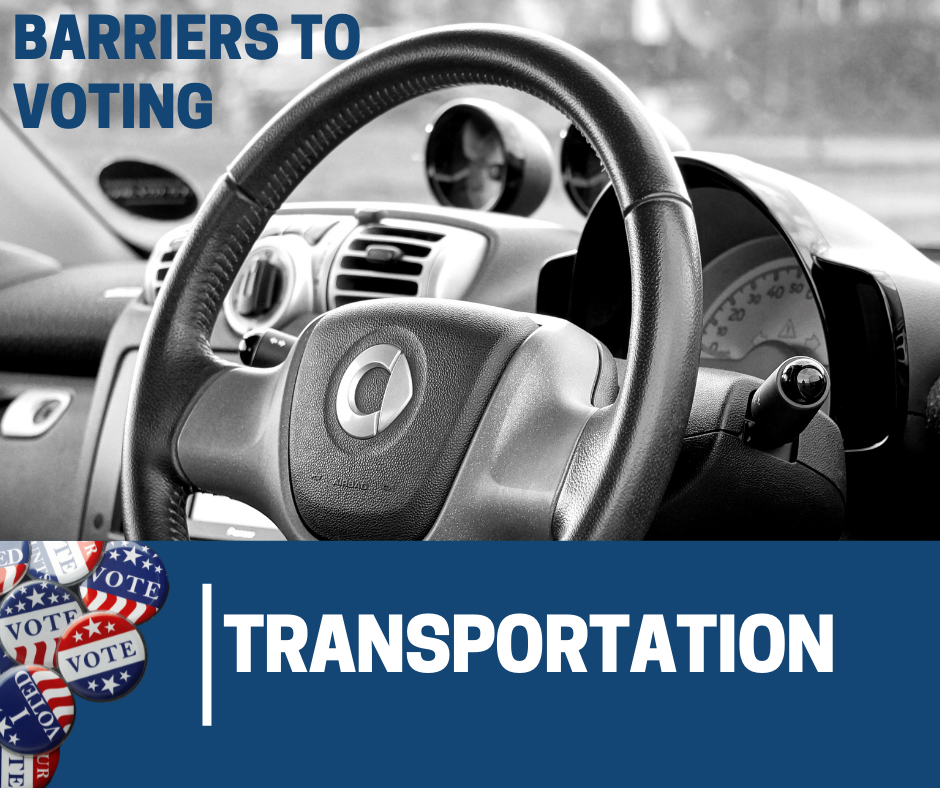There are many barriers to voting, and it keeps getting worse thanks to Republican states passing more and more anti-voter laws. Some big ones are registration problems, voter ID laws, lack of language access, reduced early voting and voting hours, and voting roll purges. But there are plenty of other obstacles people face that we need to address.
One of these is the lack of transportation.
This is probably best exemplified by a Harvard/Boston University study of the 2018 election in Michigan. The study found that while 66% of voters with access to a car voted, only 36% of those without access voted. Access to a vehicle means you are not reliant on the help of others or public transportation to get where you need to go; it means you do not lack transportation.
People without access to a car are more likely to be low-income, a minority, and non-college-educated, meaning transportation barriers exacerbate existing inequalities, especially around voting. Those without vehicles are also more likely to have a disability.
A Gallup poll from 2018 found 16% of US adults drive a few times a month, rarely or never. This is true for 18% of women, 19% of non-college graduates, 20% of those 18-29 years old, 23% of those 65 plus, and most glaringly, 27% of those making less than $36,000 a year.
That means all of these groups are more likely to face issues in getting to the polls.
All in all, 2.6% of non-voters said transportation was a problem, and 2.7% said an inconvenient polling place was a problem, according to the Pew Research Center. Polling places can be inconvenient for a number of reasons, including distance from a place of residence or from public transportation stops. And while that may not seem like a huge problem, 100 million people didn’t vote in 2016, so these were problems for millions of potential voters.
If we look at young people, a group known for low voter turnout, the statistics are even worse. In 2016, 29% of young people, those between 18 and 29, said not having a ride was a factor in why they didn’t vote. That increases to 35% of youth without college experience and 38% of BIPOC youth, according to a Harvard/MIT study.
And that’s horrifying.
So what can we do to ensure transportation isn’t a barrier? First, we can make public transit more accessible and easier to use to get to polling locations. Second, we need more polling locations and drop boxes. Lastly, we need more absentee voting.
Until we can get there–and it will take a while– we need rides to the polls.
That’s where Rideshare2Vote comes in. We were founded because we realized how many people wanted to vote but couldn’t make it to their polling location. We focus our work on those who tend not to be prioritized by traditional campaigns and organizations due to resources. We want to make sure that everyone is able to make their voice heard, working one election at a time. We specifically reach out to communities that have been disenfranchised, low propensity voters who may not vote often or who may be voting for the first time, the accessibility community who utilize our wheelchair program, and older adults and young people.
At Rideshare2Vote, we are committed to ensuring lack of transportation isn’t a barrier to anyone’s ability to vote. So if you or someone you know needs a ride, give us a call or request a ride online. If you want to help us, we would love to have you. And if you want to support our work, consider donating so we can reach more people.
by Betsy Zalinski


Peyton
This barrier to voting isn't as widely discussed as certain other forms of voter suppression, it's incredible that y'all are not only bringing awareness to it but also doing something about it!